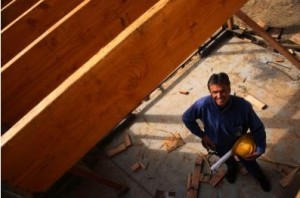Linking mobile learning to real world artefacts and tools
 More on work based mobile learning.
More on work based mobile learning.
One of the major problems with Technology Enhanced Mobile Learning has been the split between the digital and analogue worlds. The digital world enables all kinds of personal interactions and interactions with digital artefacts. Some things are easier to digitalise than others. So books, diagrammes, audio, video can all easily be transmitted through digital media. But some artefacts are more difficult to capture in digital media – for instance a hammer, a saw, an earthmover. Of course it is possible to simulate some of these things – for instance flying an aircraft.
It is much more problematic to capture the haptics of using a hammer. Thus Technology Enhanced Learning has tended to focus on cognitive processes of learning. When it comes to practice we tell learners they should use their computers to assist in the process of reflection. That is fine but it is not enough. Many areas of work require real world interactions with both people and with physical artefacts. And I think that is why Technology Enhanced Learning has made only a limited inroad into work based learning and for that matter into learning in Small and Medium Enterprises.
The importance of tools and physical artefacts should not be underestimated. Artefacts are closely linked to practice. Wenger (1998) points out that amongst other features a Community of Practice is defined by “what capability it has produced – the shared repertoire of communal resources (routines, sensibilities, artefacts, vocabulary, styles, etc.) that members have developed over time.”
There are different approaches we can take to integrating physical artefacts with applications and technology for learning (and in a further post I will outline some ideas). At a more abstract level I think we have to progress beyond seeing technology (like Learning Management Systems) as a container for learning into using mobile technologies as a tool for working and learning. In other words mobile technologies themselves become an artefact, on the same level as other work tools. We also need to look at integrating learning with the increasingly sophisticated data that many machines and artefacts produce – data that at the moment often exists in a silo. Of course that means integrating learning in the work process, and bringing together digital work tools with digital learning tools. That learning needs to be scaffolded seems obvious. But the scaffolding should move seamlessly between the use of digital devices and interactions with real life objects.
And that again requires co-design approaches, involving potential suers from the start in designing and developing learning processes and applications. Learning layers is making good progress with this and I am increasingly confident that the project can transcend the divide between the physical and digital worlds.

[…] on http://www.pontydysgu.org Évaluez ceci :Share this:TwitterFacebookEmailGoogle +1ImprimerWordPress:J’aimeSoyez le […]
[…] Linking mobile learning to real world artefacts and tools More on work based mobile learning. One of the major problems with Technology Enhanced Mobile Learning has been the split between the digital and … http://www.pontydysgu.org/…/linking-mobile-learning-to-real-worl… […]